Editor's Choice Award
Our Editor's Choice award goes to products that dramatically exceed expectations for performance, value, or cutting-edge design.
- Very bright image from long-lasting laser light source
- Good gamut coverage
- Quiet operation
- Dynamic tone-mapping and HDR10+ support
- 4K/120Hz support
- Motorized lens cover
- Slight blue bias to the black floor
- No separate memories for SDR/HDR settings in a single picture mode
- No 3D support
- Potential moiré effect with certain woven screens
The Epson QB1000 is the entry-level model in their new Q series, designed to provide users with high-lumen output to fill large screens with impressive HDR performance and excellent color reproduction, all while maintaining the performance standards Epson is known for. The QB1000 is a compelling option for those seeking to illuminate even the largest screens without exceeding their budget.
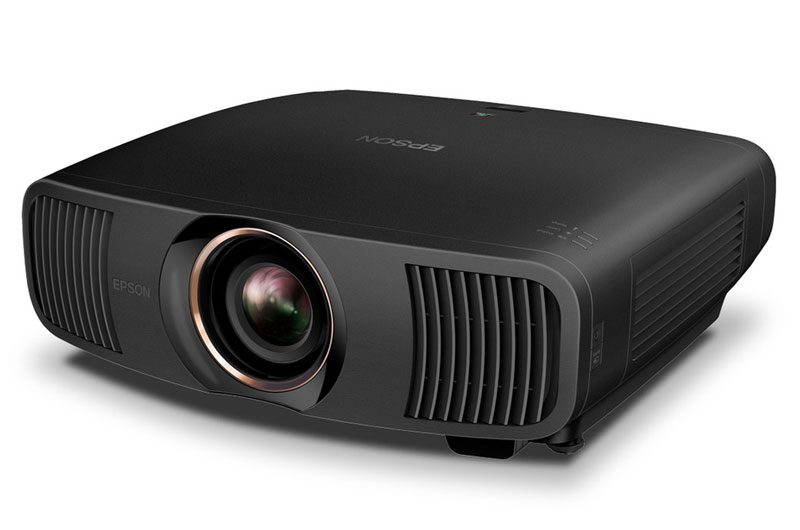
In August 2024, Epson announced their new Q Series 3LCD projectors, which debuted at CEDIA 2024. Designed to deliver ultra-premium, high-lumen output, these projectors cater to modern multipurpose living spaces. This innovation moves projectors beyond traditional dark theaters and media rooms, making them ideal for environments such as living rooms. The QB1000 serves as the entry-level model in the Q Series and is tailored for use in both dark rooms and moderately lit multipurpose spaces.
The QB1000 stands out as a cost-effective alternative to competing offerings in this segment, delivering comparable performance without compromising quality. Continuing Epson's tradition of using true 3-chip LCD displays, the QB1000 features a familiar design reminiscent of the popular LS12000, which Projector Central reviewed back in March of 2022.
The QB1000 offers several enhancements while upholding the exceptional quality Epson is known for. With its excellent gaming latency, bright and vibrant visuals, and newly added dynamic tone mapping, the QB1000 is poised to win over both existing and new fans alike.Features
Released in September 2024 with an MSRP of $7,999, the Epson QB1000 delivers an impressive 3,300 ISO21118 Lumens of brightness. In our measurements, it not only met this specification but actually exceeded it by 2.5%, achieving 3,383 lumens. This performance is particularly remarkable, considering that home cinema projectors of this caliber capable of this level of brightness typically cost two to three times as much.
The QB1000 features Epson's 3-chip 3LCD projection engine, which uses three individual LCD chips for red, green, and blue to deliver high color brightness and vibrant images. This is paired with a solid-state, multi-array laser diode light source, offering exceptional brightness and a lifespan of up to 20,000 hours before reaching half-brightness, all without requiring maintenance. Epson has developed a proprietary compensation filter designed to work alongside the multi-array laser. This filter helps control light polarization, suppress stray light within the light path, enhance black density, and improve the overall dynamic contrast of the picture—a feature Epson refers to as UltraBlack Technology. UB Tech also appears in the LS12000 and in several prior models that advertise the UB designation in their model numbers.
Similar to the LS12000, the QB1000 is a 4K UHD display that utilizes pixel shifting to deliver and resolve the full UHD 4K (3840x2180) resolution of 8.29 million pixels on the screen. The image produced by the QB1000 is remarkably sharp, and most viewers would find it difficult to distinguish it from native 4K. However, it is worth noting that the pixel grid structure may be visible when viewed from a certain close-up distance.
The exceptional image sharpness is largely attributed to the VRX cinema lens housed in the QB1000, a proprietary 15-element precision glass lens with a throw ratio of 1.35:1 to 2.84:1. This 2.1X zoom lens delivers outstanding sharpness, precise focus, and uniform brightness. Its 3-axis motorized design enables powered horizontal and vertical lens shifts, offering an impressive 96 degrees of horizontal shift and 47 degrees of vertical shift. These adjustments, along with various zoom and focus settings, can be saved in any of the 10 available memory presets.
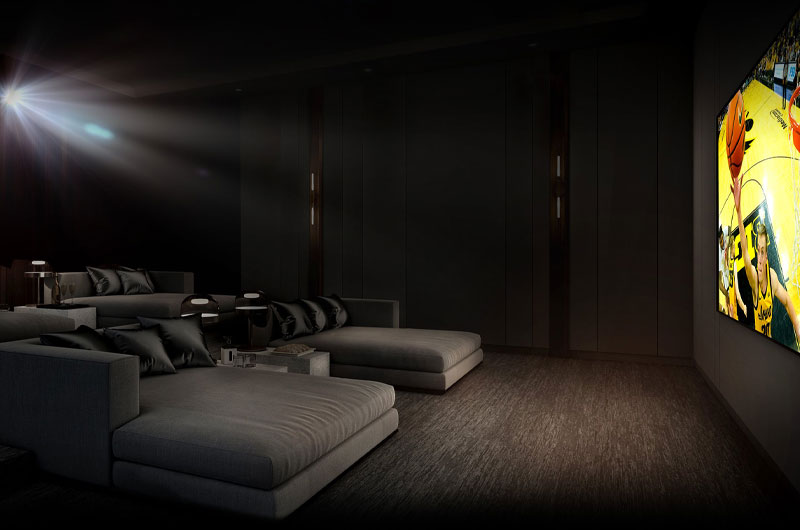
The QB1000 also features Epson's new 32-bit QZX Picture Processor, which introduces an impressive set of new capabilities and performance enhancements. Thanks to this processor, the QB1000 supports dynamic tone-mapping, offering excellent performance and a welcome addition to the Q series for standard HDR. It also supports HDR10+ and HLG, providing users with a fully immersive HDR viewing experience. Other features powered by the QZX processor include image super-sampling, dynamic contrast adjustment, and frame interpolation, among others. Unfortunately, like some other recent Epson projectors including the LS12000, this projector does not support 3D playback.
The QB1000 features a familiar industrial design that is identical to that of the LS12000. Its appearance is quite appealing and includes convenient features like a motorized lens cover—a feature I wish more projector manufacturers would adopt, as it is one of my personal favorites. The projector shares the same dimensions as the LS12000, measuring 20.5 x 7.6 x 17.6 inches (WHD) and weighing approximately 28.2 pounds.
The QB1000 supports both front and rear projection and can be installed in either ceiling-mounted or tabletop orientations, making it versatile enough to fit nearly any setup. Its generous lens adjustments further enhance its adaptability. For more challenging installations, keystone correction is available with +/- 30 degrees of adjustment. However, it's always recommended to place your projector carefully and avoid using such features whenever possible to preserve image quality, particularly with a higher-end projector like this intended for permanent installation. To determine the appropriate throw distance for your desired screen size, you can use the ProjectorCentral Epson QB1000 Throw Calculator.

The QB1000 is a native 120Hz projector that delivers excellent gaming performance for today's latest video game consoles and high-end gaming PCs. It supports 4K/120Hz gaming, thanks to Epson's inclusion of two 40 Gbps HDMI 2.1 ports, one of which (HDMI 2) supports eARC. Additionally, the QB1000 features ALLM (Auto Low Latency Mode), enabling it to switch automatically to Fast Image Processing mode for latency optimized for gaming. During our testing, the QB1000 achieved latency of 20ms in both 4K/60Hz and 4K/120Hz modes, making it ideal for all but the most competitive gaming sessions.
The included backlit remote is highly functional and responsive, providing quick access to all the features a user might need to efficiently navigate the QB1000. It includes transport buttons such as Play, Pause, and Stop for CEC-supported devices. Additionally, the QB1000 offers support for various automation and home control systems, including Crestron and Control4, which is a valuable feature. This integration allows users or their installers to incorporate the QB1000 into their system and program their preferred remote exactly as desired.
Performance
Color Modes. The QB1000 offers four picture modes, one fewer than the five available on the now step-down LS12000. Without the Bright Cinema mode found on that model, the QB1000 is left with Dynamic, Vivid, Cinema, and Natural modes. These options should still suffice for most users. Notably, the picture modes are shared between both SDR and HDR and do not retain separate settings based on the dynamic range. This means any adjustments made to a picture mode will persist regardless of whether the content is in HDR or SDR, requiring users to dedicate a specific picture mode to each and then manually switch modes based on the content. Additionally, as with the LS12000, Dynamic mode remains the only one capable of performing a Full Fade to Black (FFTB), which basically shuts down the light source fully for 100% black on scene transitions that call for it. This is unfortunate, as extending this capability to all modes would have been a welcome improvement.
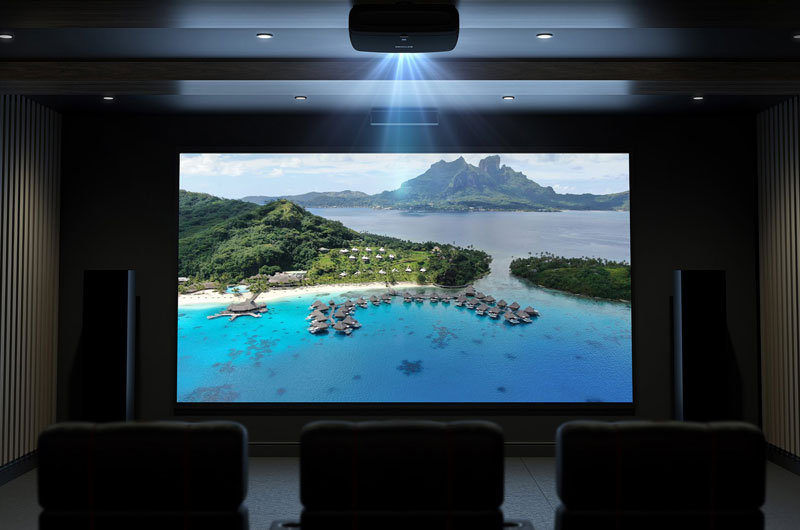
The QB1000 provides a comprehensive suite of calibration controls, enabling adjustments to standard picture settings such as Contrast, Brightness, Color Saturation, Tint, and Sharpness. Beyond these, it offers Offset and Gain controls, as well as 11-point White Balance controls, to fine-tune color temperature and RGB balance. A complete Color Management System (CMS) is also included, allowing adjustments to the Hue, Saturation, and Luminance of primary and secondary colors.
The QB1000 uses the same gamma menu found in previous Epson models, with preset values of 2, 1, 0, -1, and -2, in addition to a Custom option. In Custom mode, the gamma points appear to measure similarly to those of the LS12000, except for the third and second-to-last points, which appear to have been slightly shifted.
Out of the box (OOTB), the QB1000 performed well, delivering a bright and vibrant image. Most users could use the Natural picture mode—typically Epson's most color-accurate mode out of the box—and be satisfied with the image quality. However, depending on the content being viewed, some may notice slightly under-saturated colors. But despite being a bit too warm (red-leaning) and slightly under-saturated, the picture in Natural mode still looked good, which was also generally true for the Cinema mode.
In contrast, the Vivid and Dynamic picture modes tended to produce cooler images, with a noticeable blue bias in Vivid and a green/cyan bias in Dynamic. Fortunately, these picture modes can be fully calibrated. This is a significant advantage because, to maximize the QB1000's potential, users would ideally calibrate the Dynamic picture mode to benefit from its more aggressive laser-dimming capabilities.
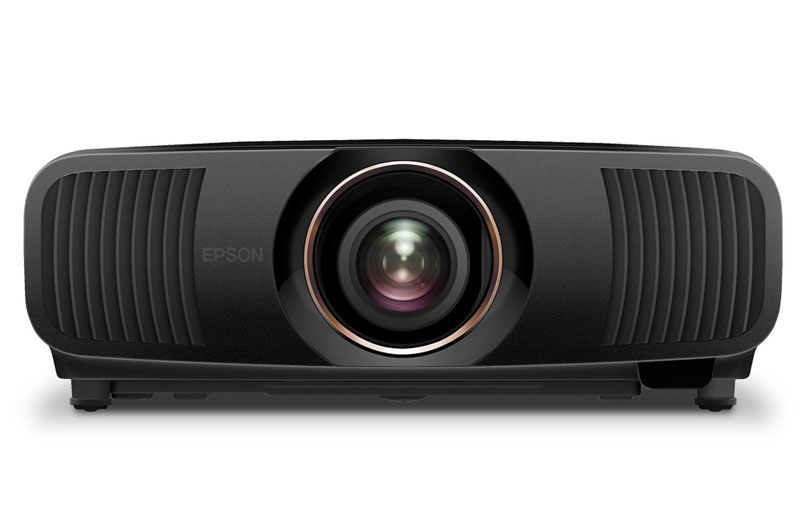
For users who choose not to calibrate, I recommend starting with the Natural picture mode, adjusting it to personal preference, and switching to a different mode, such as Cinema, for HDR content while making similar adjustments. However, to truly get the best experience from the QB1000, calibrating the Dynamic mode is highly recommended.
I calibrated the QB1000 with Calman Ultimate calibration software from Portrait Displays, a Colorimetry Research CR-250 Colorimeter, Colorimetry Research CR-100 Colorimeter, and a Murideo 8K Seven Generator. The QB1000 was calibrated to a 100-inch diagonal screen size on a Stewart Filmscreen StudioTek 130 G4 projection screen. I ran my normal measurements to confirm what I saw in OOTB viewing prior to calibration.
The pre-calibration measurements for the QB1000 in Natural picture mode showed relatively low dE errors OOTB. (DeltaE is the metric used to determine visible errors. It has been determined that anything over a dE of 3 is visible, anything over 2.3 is a just noticeable difference for trained eyes and anything below 2.3 should ideally not be seen to the eye.) Average readings for SDR were in the range of approximately 3 dE, with maximum errors reaching up to 5.5 dE. This consistency was observed across all measurements, including grayscale, 10% saturation sweeps, and large-scale Color Checker patterns. The same trend held true for HDR when excluding factors like luminance (which typically shows high errors for projectors) and color points the QB1000 was unable to achieve due to its somewhat limited gamut coverage. In such cases, the maximum error was approximately 7 dE. However, when accounting for the errors related to gamut coverage and luminance, the overall error values were significantly higher.
The QB1000's gamut coverage measured 87.76% xy and 91.39% uv for DCI-P3, while BT.2020 coverage measured 64.16% xy and 67.14% uv. Ideally, full P3 coverage would have been preferable as most HDR content today is mastered out to the DCI-P3 limits. However, considering that the device achieves this level of coverage without using a color filter, the results are commendable. The absence of a filter ensures all available light is utilized, avoiding the luminance reduction typically caused by filters in the light path used to achieve wider gamut. The QB1000's contrast ratio measured approximately 5,833:1 FOFO (full-on, full-off), aligning closely with the performance of the LS12000.
I targeted the industry-standard D65 neutral gray white point using the Gain controls, and 11-point white balance, in addition to a doing a full CMS calibration to adjust the gamut color points.
The post-calibration DeltaE errors improved significantly for both SDR and HDR. In Natural mode for SDR, the final grayscale average was 0.7 dE, with a maximum of 1.3 dE. The color gamut had an average DeltaE of 0.7, with a maximum of 1.3 dE. A large 150+ patch Color Checker, which tests swatches representing different skin tones, blue sky, etc., measured an average of 0.8 dE with a maximum of 2 dE. Saturation sweeps at 5% increments showed an average of 0.6 dE and a maximum of 1.5 dE. Post-calibration HDR results, using the calibrated Cinema mode , showed an average of 2.5 dE with a max of 6.6 dE, primarily due to luminance, and a color space/gamut average of 5.1 dE with a maximum of 8.4dE due to the limits on color space coverage and on luminance being below the ideal targets, typical of projectors when measured against an HDR standard designed for bright, flat-panel TVs.
The devices I used for reviewing content post calibration were an R_Volution Player One 8K media player and AppleTV 4K.
1080p SDR. For SDR auditions, I decided to watch Vikings, Season 3, Episode 1 on Apple TV 4K. The image quality was exceptionally sharp, with well-reproduced colors, natural skin tones, and good shadow detail. Motion handling was excellent, particularly during scenes like when Ragnar, Lagertha, and Bjorn are sailing to Wessex and the camera panned smoothly as the ships passed by. The image was clean and exhibited little to no judder. Upon their arrival in Wessex, the QB1000 rendered everything beautifully, from the subtle variations in the landscape's colors to the intricate details of the clothing worn by the characters.
4K HDR10 Viewing. The first movie I chose to watch in 4K/HDR was Godzilla: King of the Monsters via Apple TV 4K. The film was presented with excellent sharpness and clarity, showcasing impressive detail.
The skin tones were particularly well-rendered in the opening scene, where Emma and Madison were cooking breakfast just before heading to Mothra's location. However, I found the image to be slightly darker than I would have liked due to the execution of the dynamic tone mapping (DTM). I opted to turn DTM off for this movie, which increased the overall brightness of the picture due to it falling back on the default value for Epson's 16-position HDR Setting control, which was set to position 2, close to the brightest setting. Fortunately, this adjustment did not negatively affect the skin tones or any other elements of the image, aside from the overall brightness.

When Madison and Emma arrived at Mothra's location, where she emerged from her cocoon, the QB1000 delivered impressive shadow detail and accurate color reproduction. This was evident in the red warning lights of the safe room and the pulsing blue light emitted by Mothra. Overall, the image quality was great, with sharp detail, excellent highlights, and vivid colors.
The next film I watched was 1917 using the R_Volution Player One 8K media player. The scene I chose to focus on was when Schofield wakes up at the bottom of the stairs in the dark. This scene was presented well regardless whether DTM was enabled or not. Without DTM, the scene appeared slightly brighter, making some elements of the image easier to see since, again, the default value for the HDR Setting was 2. With DTM enabled, everything was still visible though the overall image was slightly darker since DTM seemed to present the image with roughly around the equivalent of a 4 or 5 HDR Setting.
A main reason I wanted to review this scene was to compare the QB1000's performance to how I have seen this presented on the LS12000. On the LS12000, this dark scene exhibits a noticeable blue bias. While this issue is still somewhat present, it has improved significantly in the QB1000, to the point where I no longer consider it a major problem, as I did with the LS12000. That said, the blue tint in dark content is still visible, but it is much less pronounced.
Have a Projector Question?
Join our free ProjectorCentral Facebook Group to get answers quickly.
Check it Out
The rest of the scene played out well, with good detail and smooth fade-ins as the flares illuminated the sky before gradually fading away.
The last movie I watched in 4K/HDR was The Secret Life of Pets 2 on Apple TV 4K. The scene I focused on in this punchy, animated feature was when Max and Duke arrived at the farm. In this scene, as Max steps out of the car and the camera pans around, there's a spot where a silo is visible, and to the right of it are clouds with the sun peeking through. The scene is quite bright, and if a display doesn't have good dynamic tone mapping, the sun and clouds will likely clip and become indistinct.
I'm happy to report that the QB1000 handled this challenging scene exceptionally well. Without DTM enabled, the sun and clouds appeared as a large white patch with no detail. However, once DTM was activated, the QB1000 resolved the clouds near the sun while also restoring the sky's color. The image revealed shades of blue and pink which are present in the sky and clouds, and the QB1000 rendered these details beautifully. The overall image remained bright, vibrant.
Conclusion
The QB1000 is an outstanding projector that upholds Epson's reputation for delivering excellent value and performance. In a category that typically requires a significantly larger financial investment to achieve this level of performance, the QB1000 stands out with its $7,999 price tag and 3,300-lumen brightness, making it a strong contender in its class.
The QB1000 also delivers solid gaming performance at both 4K/60Hz and 4K/120Hz, offering some of the lowest input latency available in a high performance home theater projector and making it an excellent choice for gamers. Additional features, such as support for HDR10+, further enhance its appeal.
Despite its strengths, there are still some areas for improvement. The blueish black floor, though improved compared to the LS12000, remains noticeable. Another area that could use refinement is the menu system, where having separate memories based on dynamic range and automatic detection that activates the correct settings for SDR and HDR would be ideal. The menus could also be more streamlined, particularly for calibration, where clearing menus to allow the pass through of test patterns is necessary; alternatively, the menus could be redesigned to avoid obstructing the view.
One other issue, which may not be easily resolved, is the visibility of the projector's pixel grid from approximately six feet away. This poses two challenges. First, if a viewer sits too close, the pixel grid becomes apparent and potentially distracting. Second, and more significantly, if the projector is paired with a woven screen whose weave happens to match the size of the pixel grid, moiré patterns may become visible regardless of the seating distance.
Aside from these minor drawbacks, there is little to dislike about the QB1000, though its value proposition is particularly intriguing given that Epson's LS12000 is still available at its attractive $4,999 price. The chassis and feature set of the QB1000 are nearly identical. However, where the QB1000 truly shines is in its inclusion of dynamic tone mapping (DTM), which significantly enhances image balance and overall enjoyment, and in its addressing of the LS12000's bluish-black floor. Furthermore, the QB1000 boasts higher brightness compared to its predecessor's 2,700 lumens.
The choice between the two models may ultimately depend on the rest of a user's system. For instance, if a user employs external video processing, the DTM feature might hold less appeal, though the additional brightness could still be desirable. Conversely, for users without external processing, the DTM will be a significant advantage, even if the extra brightness isn't a priority. For those who already own an LS12000, unless the DTM, extra brightness, and moderation of the blue in the blacks are important priorities, they may not find the upgrade necessary, as the performance between the two is quite similar.
These factors may lead potential buyers to weigh their options carefully when deciding which model to purchase. The good news is that, regardless of their choice, users will be investing in an excellent-performing projector.
Measurements
Brightness. The Epson QB1000 is rated for 3,300 ISO21118 lumens. The brightest picture mode is Dynamic which measured 3,383 lumens using the 9-point averaged measurement defined in the ISO and recently retired ANSI standards. That result is almost 2.5% higher than Epson's listed specification.
Epson QB1000 Lumens
| SDR/HDR Modes | LD POWER 100 |
|---|---|
| Dynamic | 3,383 |
| Vivid | 2,684 |
| Cinema | 2,508 |
| Natural | 2,514 |
Zoom Lens Light Loss. The QB1000's light loss when shifting from the widest zoom position to its longest telephoto position was 35.1%. This is high but not particularly unusual for a long, 2.1X zoom with multiple elements. Users should be cognizant of trying to mount the projector as close to the screen as possible to retain as much brightness as possible.
Brightness Uniformity. The Epson QB1000 projecting a 100-inch diagonal image resulted in measured brightness uniformity of 80% while in both wide-angle zoom and telephoto zoom. The brightest portion of the screen was the middle top with the dimmest being the right top. The difference in brightness on a full white screen was not noticeable.
Fan Noise. Epson rates the fan noise at 22-32 dB d using the industry-standard multipoint averaged measurement in a soundproof room. Using Room EQ Wizard software and a Umik-1 microphone, my theater room ambient noise floor is 33.3 dBA. The QB1000 measured at the following dB in the following laser power settings at a distance of 3 feet. The Epson QB1000's highest audible noise starts after increasing laser power from 85% to 90%.
Normal 100% Laser
Rear: 37.0 dbA
Left: 37.7 dbA
Right: 38.4 dbA
Front: 37.5 dbA
ECO 50% Laser
Rear: 34.2 dbA
Left: 34.4 dbA
Right: 34.6 dbA
Front: 34.2 dbA
Input Lag. Input lag measurements were done using the Fast Image Processing and measured as follows: 1080p/60Hz = 41ms, 1080p/120Hz = 30ms, 4K/60Hz = 21ms, 4K/120Hz = 21ms.
Connections
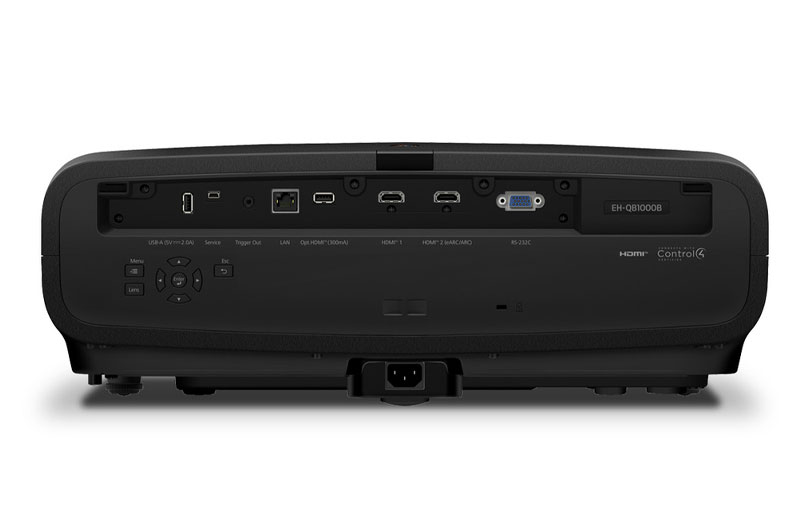
- HDMI 2.1 (x2; HDCP 2.3; 40Gbps FRL: 10G@4L; eARC on HDMI 2)
- RJ45 LAN 100 base Tx (control only)
- USB 2.0 Type A (300mA max power delivery; for optical HDMI cables with addition power supply, no media playback)
- USB 2.0 Type A (5V, 2.0A power delivery; firmware updates - no media playback)
- Mini USB (service only)
- RS232 (x1)
- 12V DC Trigger
Final Settings
Calibrated image settings from any third-party do not account for the significant potential for sample-to-sample variation, nor the different screen sizes and materials, lighting, lamp usage, or other environmental factors that can affect image quality. Projectors should always be calibrated in the user's own space and tuned for the expected viewing conditions. However, the settings provided here may be a helpful starting point for some. Always record your current settings before making adjustments so you can return to them as desired. Refer to the Performance section for some context for each calibration.
SDR Settings
Light Output: 50%
Color Mode: Natural
Brightness: 50
Contrast: 50
Color Saturation: 50
Tint: 50
Sharpness
Standard: 3
Thin Line Enhancement: 1
Think Line Enhancement: 1
White Balance
Color Temp: 6500K
G-M Correction: 4
Custom
Offset R: 50
Offset G: 50
Offset B: 50
Gain R: 43
Gain G: 40
Gain B: 47
Greyscale
| Adjustment Levels | Red | Green | Blue |
|---|---|---|---|
| Adjustment Level 11 | -3 | -3 | -3 |
| Adjustment Level 10 | 0 | 0 | -1 |
| Adjustment Level 9 | -1 | 0 | -1 |
| Adjustment Level 8 | -1 | 0 | -2 |
| Adjustment Level 7 | -1 | 0 | -2 |
| Adjustment Level 6 | -3 | 0 | -3 |
| Adjustment Level 5 | -3 | 0 | -3 |
| Adjustment Level 4 | -4 | 0 | -3 |
| Adjustment Level 3 | -5 | 0 | -5 |
| Adjustment Level 2 | -5 | 0 | -7 |
| Adjustment Level 1 | 0 | 0 | 0 |
Frame Interpolation: Off
Dynamic Contrast: High Speed
Image Enhancement: Off (User Preference)
Scene Adaptative Gamma: Off (User Preference)
Gamma: -2
Color Management
| Color | Hue | Saturation | Brightness |
|---|---|---|---|
| Red | 52 | 46 | 50 |
| Green | 49 | 53 | 46 |
| Blue | 53 | 51 | 49 |
| Cyan | 50 | 48 | 47 |
| Magenta | 50 | 50 | 46 |
| Yellow | 52 | 53 | 45 |
HDR Settings
Light Output: 85%
Color Mode: Cinema
Brightness: 50
Contrast: 50
Color Saturation: 50
Tint: 50
Sharpness
Standard: 3
Thin Line Enhancement: 1
Think Line Enhancement: 1
White Balance
Color Temp: 7
G-M Correction: 2
Custom
Offset R: 50
Offset G: 50
Offset B: 50
Gain R: 45
Gain G: 50
Gain B: 48
Grayscale
| Adjustment Levels | Red | Green | Blue |
|---|---|---|---|
| Adjustment Level 11 | 0 | 0 | 0 |
| Adjustment Level 10 | 0 | 0 | -1 |
| Adjustment Level 9 | 0 | 0 | -1 |
| Adjustment Level 8 | 0 | 0 | -1 |
| Adjustment Level 7 | 0 | 0 | 0 |
| Adjustment Level 6 | 0 | 0 | 0 |
| Adjustment Level 5 | 0 | 0 | 0 |
| Adjustment Level 4 | -3 | 0 | -3 |
| Adjustment Level 3 | -3 | 0 | -4 |
| Adjustment Level 2 | -3 | 0 | -3 |
| Adjustment Level 1 | 0 | 0 | 0 |
Frame Interpolation: Off
Dynamic Contrast: High Speed
Image Enhancement: Off (User Preference)
Scene Adaptative Gamma: Off (User Preference)
Gamma: 0
Color Management
| Color | Hue | Saturation | Brightness |
|---|---|---|---|
| Red | 58 | 46 | 50 |
| Green | 50 | 50 | 50 |
| Blue | 54 | 51 | 50 |
| Cyan | 47 | 46 | 50 |
| Magenta | 61 | 48 | 50 |
| Yellow | 55 | 49 | 50 |
For more detailed specifications and connections, check out our Epson QB1000B projector page.
To buy this projector, use Where to Buy online, or get a price quote by email direct from Projector Central authorized dealers using our E-Z Quote tool.
-Slightly brighter -Dynamic tone mapping
And the cons are: -Still has the blue bias that Epson never bothered to fix with the LS12000, and likely will not fix with the QB-1000 -No 3D -Still pixel shifted for 4k -$3000 higher price tag
In my opinion, DTM should have been implemented as far back as the 5050UB. Sorry, but Epson is late to the game with this feature, and from initial impressions from folks who have had hands on with this unit, the DTM is lackluster.
The blue bias issue never bothered me on the LS12000, but after moving to a flat panel, I definitely could not unsee it after the fact. The fact that it still persists with the QB series is troubling though.
It tells me that either A: Epson does not care enough to fix the issue in a satisfactory manner, or B: Epson simply cannot fix the issue because it is the result of using what is essentially the same LCD panels from as far back as the 5030UB.
I think the $8,000 price tag will be a hard pill to swallow. Especially compared to JVCs NZ500 and NZ700.
It will be interesting to see how this model fares in the current market.
Price is a little tough to swallow given the modest/slight improvement over the LS12000. Wish they would have dc'd the LS12000 and slid this into its spot/price point, then it likely would have been an easy buy for me.
As it is I will likely undergo indefinite analysis paralysis between this, the LS12000, and the NZ500. The NZ500s brightness is just so mediocre for my needs, a living room/multipurpose media room. Currently using a 12 year old epson 6010 rated at 2400 lumens which has been juuuuuuust bright enough but obviously ready for a nice upgrade.
Thanks







